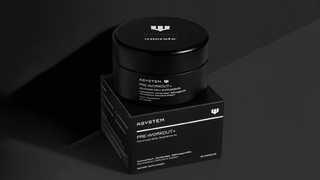NASA Confirms Artemis 1 Will Stay Put as Nicole Reaches Florida

NASA’s Artemis I rocket sits on launch pad 39-B at Kennedy Space Center on September 2, 2022 at Cape Canaveral, Florida.Photo: Kevin Dietsch (Getty Images)
NASA says the Artemis 1 is going to weather the subtropical storm expected to make landfall late on November 9. The U.S. space agency has been tracking the storm and determined the risks that Nicole poses to its $4.1 billion Space Launch System rocket and Orion spacecraft are less of a concern than stressing the Artemis 1 by rolling it back to shelter at NASA’s Vehicle Assembly Building, according to Ars Technica.
01:55
My First Car: Max Greenfield
Yesterday 2:30PM
NASA has been keeping an eye on subtropical storm Nicole, which is making its way across the Atlantic Ocean right now. By the time the storm reaches Florida and advances toward the vicinity of the Kennedy Space Center, it’s expected to have gained enough intensity to transition from a subtropical to tropical storm: the National Hurricane Center anticipates Nicole will make landfall later today as a Category 1 Hurricane.
Photo: Paul Hennessy/SOPA Images/LightRocket (Getty Images)
If that happens, the Artemis 1 could be assailed by hurricane-force winds that exceed the safety limit set by NASA. The Artemis 1 SLS rocket can resist wind gusts up to 74.1 knots, or 85 miles per hour, according to chief engineer John Blevins. But as Ars explains, wind gusts are different than sustained winds. If Nicole reaches shore as a hurricane, it would bring sustained winds up to 64 knots, or about 74 mph. These persistent wind-speeds could easily reach higher intensity in bursts, which would be at or above the limit for the Artemis 1.
NASA determined that there was a four percent chance of such wind-speeds hitting the rocket on Monday, and released a statement saying:
Based on current forecast data, managers have determined the Space Launch System rocket and Orion will remain at Launch Pad 39B. Teams at Kennedy will continue to monitor the weather, make sure all personnel are safe, and will evaluate the status of the Monday, Nov. 14, launch attempt for the Artemis I mission as we proceed and receive updated predictions about the weather.
G/O Media may get a commission

15% off
ASYSTEM – Pre-Workout+
Bruce Wayne-inspired
Pre-Workout gives enhanced energy and better recovery for your long workouts, with InnovaTea and Tibetan Cordyceps to fuel you.
But on Tuesday, the chances of hurricane-force winds reaching Launch Pad 39B went up from four to 10 percent — higher than the six percent that prompted NASA to roll the Artemis back to safety on September 26 when Hurricane Ian threatened the mission.
While the risk is now higher than it was during Ian’s assault, an anonymous source tells Ars Technica that NASA only has the budget to ferry the Artemis 1 to and fro — between Launch Pad 39B and the VAB at Kennedy — one last time.
Rolling the big rocket and spacecraft four miles back and forth costs a quite a bit, but, crucially, it also puts significant stress on its components; NASA is going to let its expensive rocket sit through a possible hurricane, ironically enough, to avoid damaging the Artemis 1. In any case, it’s too late to move the Artemis back to the VAB, which takes up to two days. Nicole is bearing down on Florida and could reach shore later this evening. So hold fast, Artemis.
Photo: Joel Kowsky (Getty Images)




